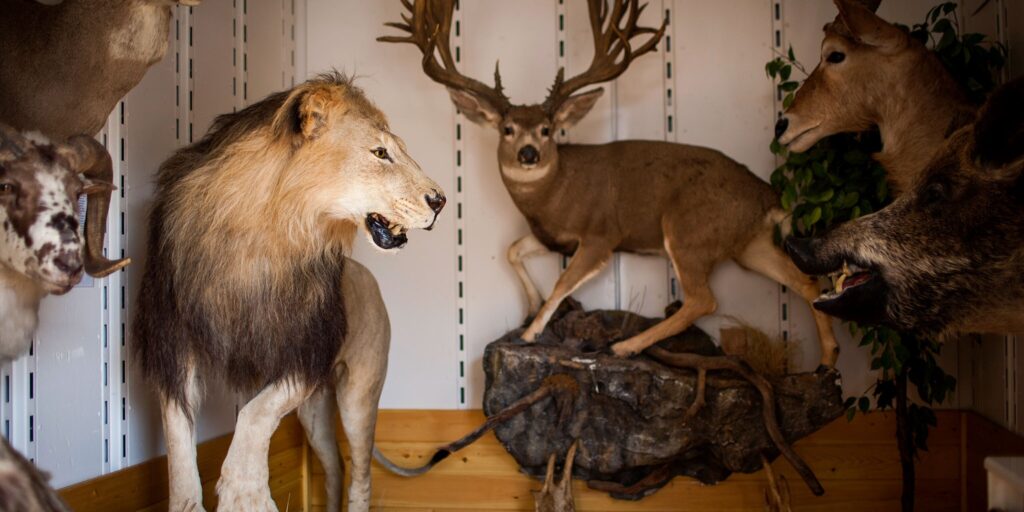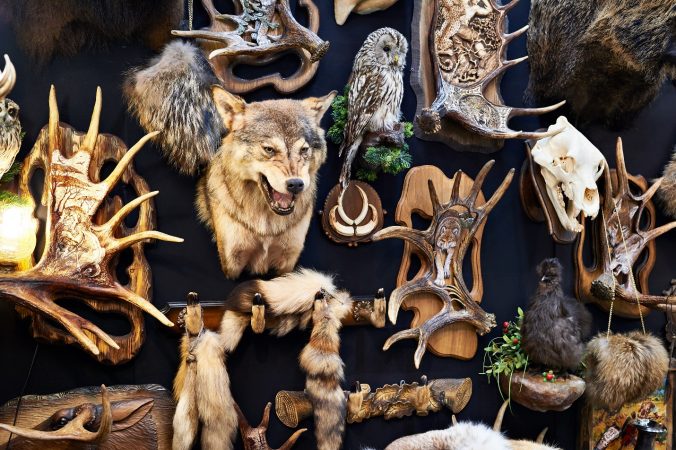For many hunters, the thrill of the hunt extends beyond the chase itself to the preservation and display of their hard-earned trophies. Trophy taxidermy offers a way to immortalize the memory of a successful hunt and showcase the beauty and majesty of the animals they’ve harvested. In this article, we’ll explore some tips for choosing and displaying hunting trophies through taxidermy.
Choosing the Right Taxidermist
- Experience and Expertise: When selecting a taxidermist for your hunting trophies, look for someone with experience and expertise in handling the specific species you’ve harvested. Choose a taxidermist who specializes in trophy mounts and has a proven track record of producing high-quality work.
- View Previous Work: Before committing to a taxidermist, ask to see examples of their previous work. Look for mounts that are lifelike and well-preserved, with attention to detail and accuracy in anatomy and coloring.
- Ask for Recommendations: Seek recommendations from fellow hunters or hunting associations for reputable taxidermists in your area. Word-of-mouth referrals can be a valuable resource for finding a skilled and reliable taxidermist.
- Discuss Your Vision: When meeting with a taxidermist, be prepared to discuss your vision for the trophy mount, including pose, habitat, and any specific details you’d like to include. A good taxidermist will work closely with you to bring your vision to life and ensure that the final mount exceeds your expectations.
Preparing Your Trophy for Taxidermy

- Field Care: Proper field care is essential to preserving the quality of your trophy for taxidermy. Field dress the animal as soon as possible after harvesting to prevent spoilage and deterioration. Keep the hide clean and dry, and avoid dragging the carcass to minimize damage to the fur or hide.
- Quick Freezing: If you’re unable to deliver the trophy to the taxidermist immediately, consider freezing the hide to preserve it until you’re ready. Place the hide in a plastic bag and freeze it as soon as possible to prevent bacteria growth and hair slippage.
- Document Details: Take detailed measurements and photographs of the animal before delivering it to the taxidermist. This information will help the taxidermist accurately recreate the animal’s size, proportions, and coloring in the final mount.
- Proper Packaging: When transporting the trophy to the taxidermist, take care to package it securely to prevent damage during transit. Use a sturdy container or box and cushion the trophy with packing material to ensure it arrives safely.
Displaying Your Trophy
- Choose the Right Location: When displaying hunting trophies in your home or trophy room, choose a location that showcases them prominently and allows for easy viewing. Consider factors such as lighting, wall space, and room layout when selecting the perfect spot.
- Create a focal point: Arrange your hunting trophies in a way that creates a focal point or centerpiece in the room. Group similar species together or arrange them by size to create visual interest and balance.
- Incorporate Natural Elements: Enhance the display of your hunting trophies by incorporating natural elements such as rocks, branches, or foliage. Create a natural habitat backdrop or diorama to showcase the animals in a lifelike setting.
- Rotate Displays: To keep your trophy display fresh and interesting, consider rotating mounts periodically or adding new trophies to the collection. This not only allows you to showcase your hunting achievements but also keeps the display dynamic and engaging.
Maintaining Your Trophy

- Regular Cleaning: Dust your hunting trophies regularly using a soft brush or cloth to remove any dirt or debris. Avoid using cleaning products or chemicals that may damage the fur or hide.
- Monitor for Pests: Keep an eye out for signs of pests such as moths or beetles that may damage your hunting trophies. Inspect mounts periodically and take action immediately if you notice any signs of infestation.
- Control Humidity: Maintain consistent humidity levels in the room where your hunting trophies are displayed to prevent damage to the fur or hide. Use a dehumidifier or humidifier as needed to keep humidity levels stable.
- Professional Maintenance: Periodically have your hunting trophies inspected and maintained by a professional taxidermist. A skilled taxidermist can clean, repair, or restore mounts as needed to ensure they remain in optimal condition for years to come.
By following these tips for choosing, preparing, displaying, and maintaining hunting trophies through taxidermy, you can create a stunning and meaningful showcase of your hunting achievements that will be cherished for generations to come. Whether it’s a majestic buck, a trophy fish, or a prized game bird, trophy taxidermy allows you to preserve the memories of your hunting adventures and celebrate the beauty and majesty of the natural world.
